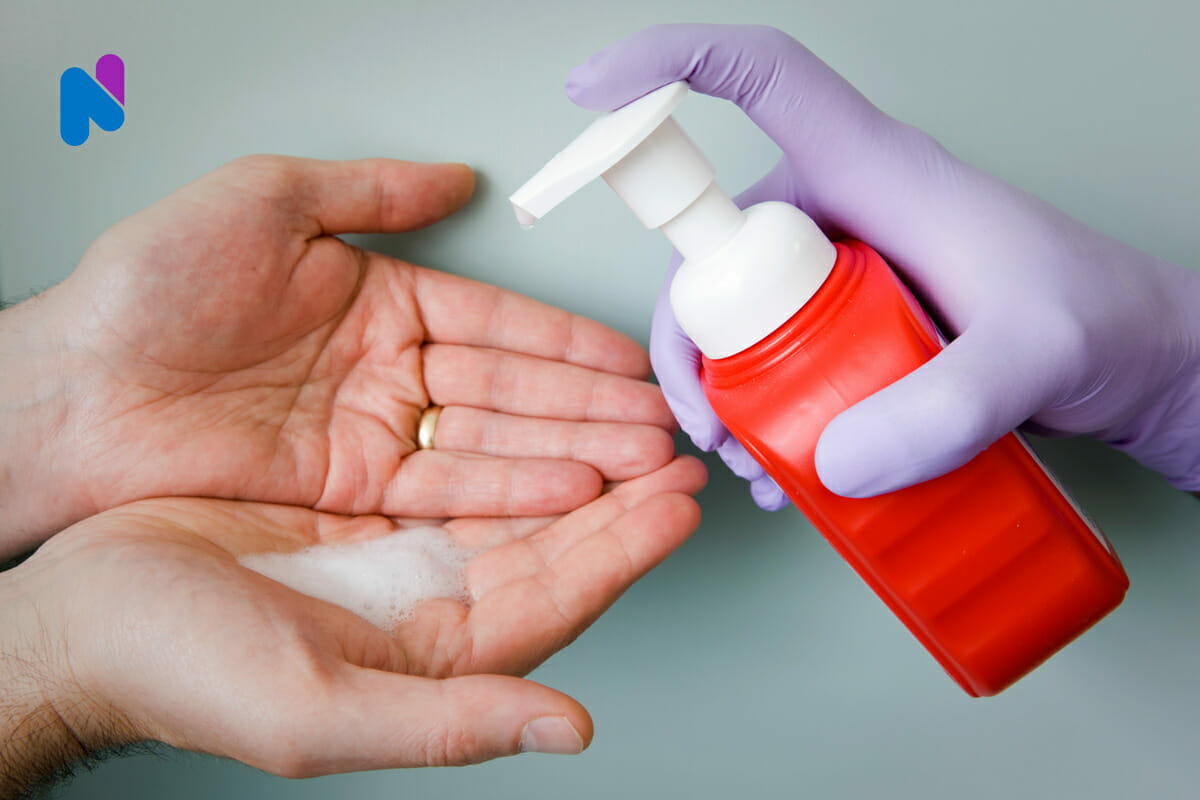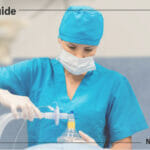Approximately, 4.5%-11.5% of home health patients had at least one episode of infection while receiving home health care services. In, 2002 a landmark article estimated that 1.2 million infections occur in home health care annually.
Home health associated infections (HAIs) are infections that were neither present nor incubating when admitted to home care. Infections appearing in a patient within 48 hours of discharge from a healthcare facility, are reported back to the facility that discharged the patient prior to their home care services.
Underlying conditions which place patients at greater risk for infection
IN THIS ARTICLE
- Older age (i.e.. geriatric patients)
- Co-morbidities (i.e.. diabetes)
- Increased stress level (i.e.. family crisis)
- Poor nutritional status (i.e.. under or overweight patients)
- Immunosuppression (i.e.. oncology patients)
- Trauma (i.e. fractured hip)
- Wounds (i.e. Stage IV pressure ulcer)
- Burns (i.e. Burns from stove)
- Tenderness at catheter site, urinary frequency, urgency, worsening of mental or functional status, changes in urine (new bloody urine, foul odor, increase sediment). Home health agencies track CAUTI rates in to assess determine amount of catheter-associated infections. The first step to assess the agency’s CAUTI rate is to calculate the amount of patients at risk for CAUTI. First, the agency determines the amount of patient who had a Foley catheter during the time period. This is done by calculating the number of patients who had a urinary catheter each day during the assessment period. After this is done then the next step is to determine the infection rate. To determine the infection rate (CAUTI) divide the number of infections in a specified period of time divided by the amount of patients at risk for a UTI. This number is then multiplied by 1000. For example, you first determine the number of catheter days for a time frame in May to be 120. You then determine the amount of new CAUTI’s.
Chain of infection starts with an infectious agent then transfers to the reservoir then transfers through a portal of exit and is then transmitted by a mode of transmission then the infectious agency finds a portal of entry and then transfers to a host. Home health patients may have substantial ‘host’ risk factors, including advanced age, chronic illness, or immunosuppression. Most of the care that is provided to the home health patients is provided by non-skilled caregivers and family members who increase the infection rate for these patients. Family, patients and care partners must apply the principles of antiseptic care in the home due to increased risks of infection. The chain of infection can occur in the home due to unpredictable variables. The key to breaking the infection chain is to remove as many of the variables as possible and instructed patients, family and caregivers on antiseptic techniques when providing care.
The elderly are the most at-risk age groups for developing HAIs. For the elderly, coexisting disease puts them at higher risk.
- Nutrition: Patients with inadequate nutrition, which may result in low protein/albumin levels, are at risk. Ask residents to identify which of their patient populations this may refer to, for instance, the elderly patient who has limited access to food, patients who abuse prescription pain killers or alcohol, or patients who are obese or malnourished.
- A pre-existing infection will significantly increase the risk for HAIs.
- Limited immune responses refer to patients receiving chemotherapy or radiation, those with cancer, those with chronic illnesses such as diabetes, cardiac or respiratory diseases.
- Burns: When the skin is intact, it is considered the best protection from outside sources of infection. Because this protective covering is lost during a burn, these patients are at especially high risk for infection.
- Smoking: The effects of smoking include a decrease in tissue oxygenation resulting in delayed wound healing.
- Evidence shows that the longer the patient is hospitalized the higher the incidence of HAI (Kalispell, R. M., Munro, C. L., & Giuliano, K. K., 2008). This includes patients with frequent hospitalizations.
- Lifestyle: High-risk behaviors, including exposure to communicable/infectious diseases, IV drug use.
- Travel history: Visiting affected areas, which include West Nile virus, Ebola, and Ziska virus.
- Trauma that causes fractures or internal bleeding.
Healthcare workers, at the minimum, should wash their hands with soap and water when hands are visibly dirty, contaminated or soiled.
Use an alcohol-based hand sanitizer when hands are not visibly soiled to reduce bacterial counts.
When to Use an Alcohol-based Hand Sanitizer
- After contact with a patients intact skin. If skin is open or there is a wound present you must wash your hands
with soap and water. - Before eating any food.
- After any contact with stool, urine, sputum, non-intact skin or wound dressings. Again, the best practice is to wash your hands with soap and water if there are open areas or if there is noted body fluid present.
- When moving from an open wound to an intact section of the skin or body.
- After contact with objects in the patients home (i.e. door knobs, wound vac, IV pump)
- Before caring for patient who are immunocompromised or frail and elderly.
- Before inserting indwelling catheters or other invasive devices.
- Before and after applying or removing non-sterile gloves.
When to Use a Mask
- During a maximum barrier procedure.
- Changing a central line dressing.
- A mask should be worn when working with a patient placed on airborne, neutropenic or droplet precautions.
- Caring for a patient who is susceptible to infections.
- If nurse is coughing and may place the patient at risk.
- At times, a patient may need to wear a mask to prevent inhalation of pathogens.
When a to use a TB Mask (n95)
- When caring for a patient with an active Tuberculosis (TB) infection or a suspected case.
When to Wear a Gown
- When caring for a patient with colonized or infectious antibiotic-resistant bacteria such as Methicillin-resistant
- Staphylococcus aureus (MRSA) and Vancomycin-resistant enterococci (VRE).
When do we not require the use of gloves?
- Assessing vital signs: taking blood pressure, temperature and pulse
- Bathing and dressing the patient
- Caring for eyes and ears (without secretions)
- Any vascular line manipulation in absence of blood leakage.
Sources
Centers for Disease Control and Prevention. (2016a). Clostridium difficile infection. Retrieved from http://www.cdc.gov/HAI/organisms/cdiff/Cdiff_infect.html
Centers for Disease Control and Prevention. (2015). Parasites – cryptosporidium (also known as “Crypto”). Retrieved from http://www.cdc.gov/parasites/crypto/index.html
Centers for Disease Control and Prevention. (2016b). Norovirus. Retrieved from http://www.cdc.gov/norovirus/index.html
Centers for Disease Control and Prevention. (2016c). Show me the science – When and how to use hand sanitizers. Retrieved from http://www.cdc.gov/handwashing/show-me-the-science-hand-sanitizer.htm
Embry, F., & Chinnes, L. (2008). APIC – HICPAC surveillance definitions for home health care and home hospice infections. Retrieved from http://www.homecaremissouri.org/projects/infection/APIC_Definitions_InfectionsHomeCare.pdf
Shang, J., & Stone, P. (2015). Infection in home health care: Results from national outcome and assessment information set data. American Journal of Infection Control, 43, 454-459. Retrieved from http://www.ajicjournal.org/article/S0196-6553(14)01424-2/pdf
Virginia Department of Health. (2016). Urinary tract infections and catheter-associated urinary tract infections. Retrieved from http://www.vdh.virginia.gov/epidemiology/surveillance/hai/uti.htm
World Health Organization (WHO). (n.d.). Glove use leaflet information [Consumer Brochure]. Retrieved from http://www.who.int/gpsc/5may/Glove_Use_Information_Leaflet.pdf





